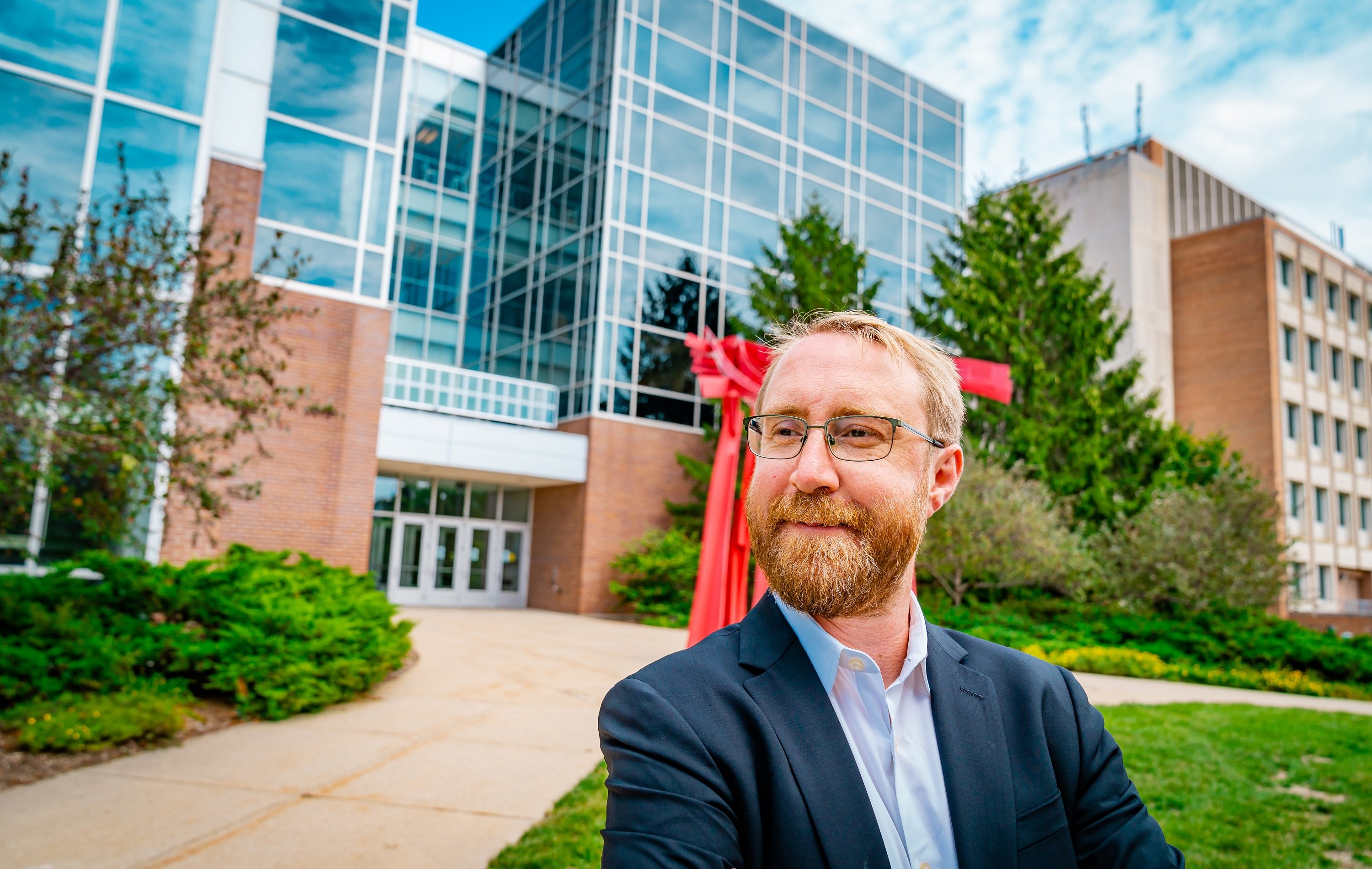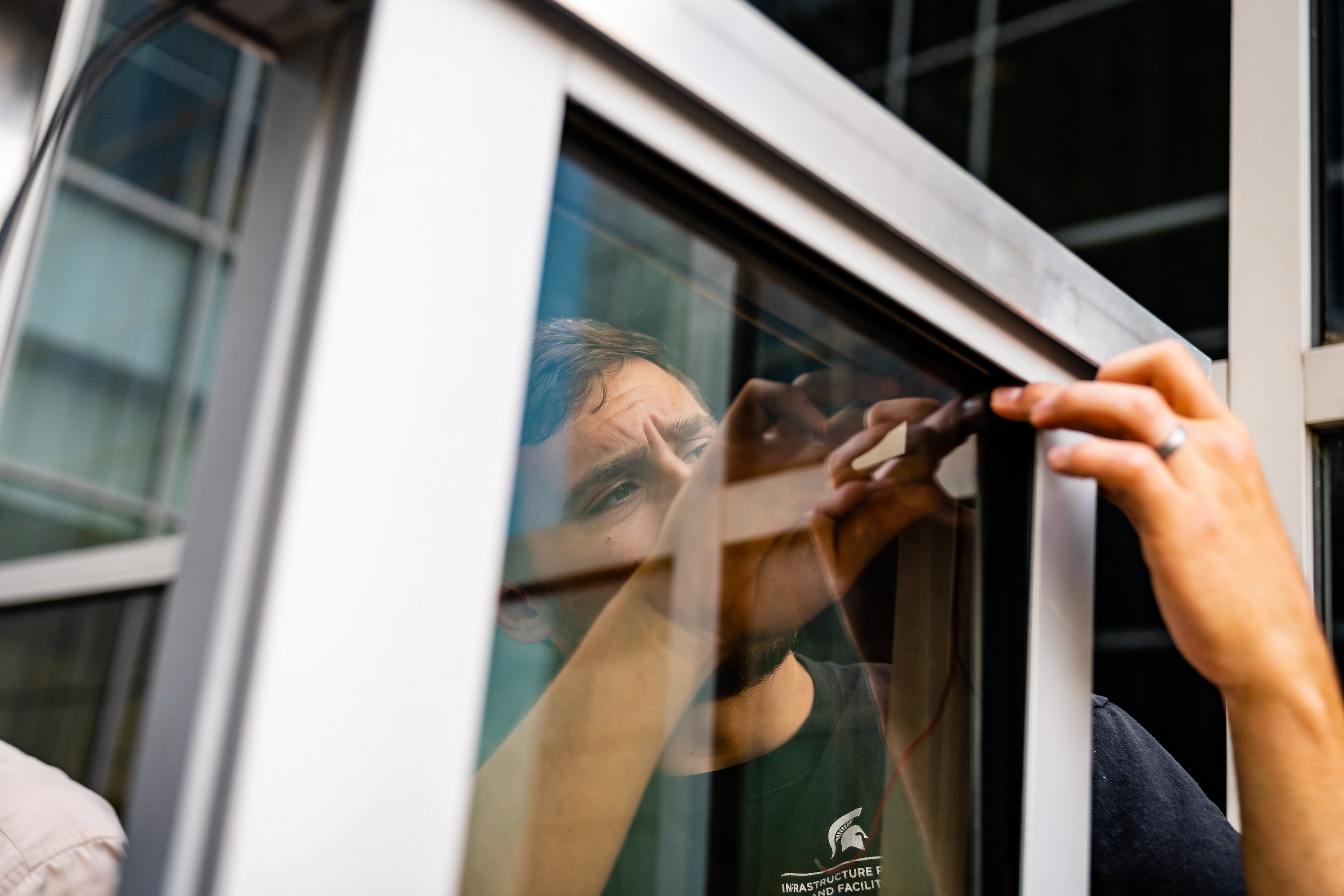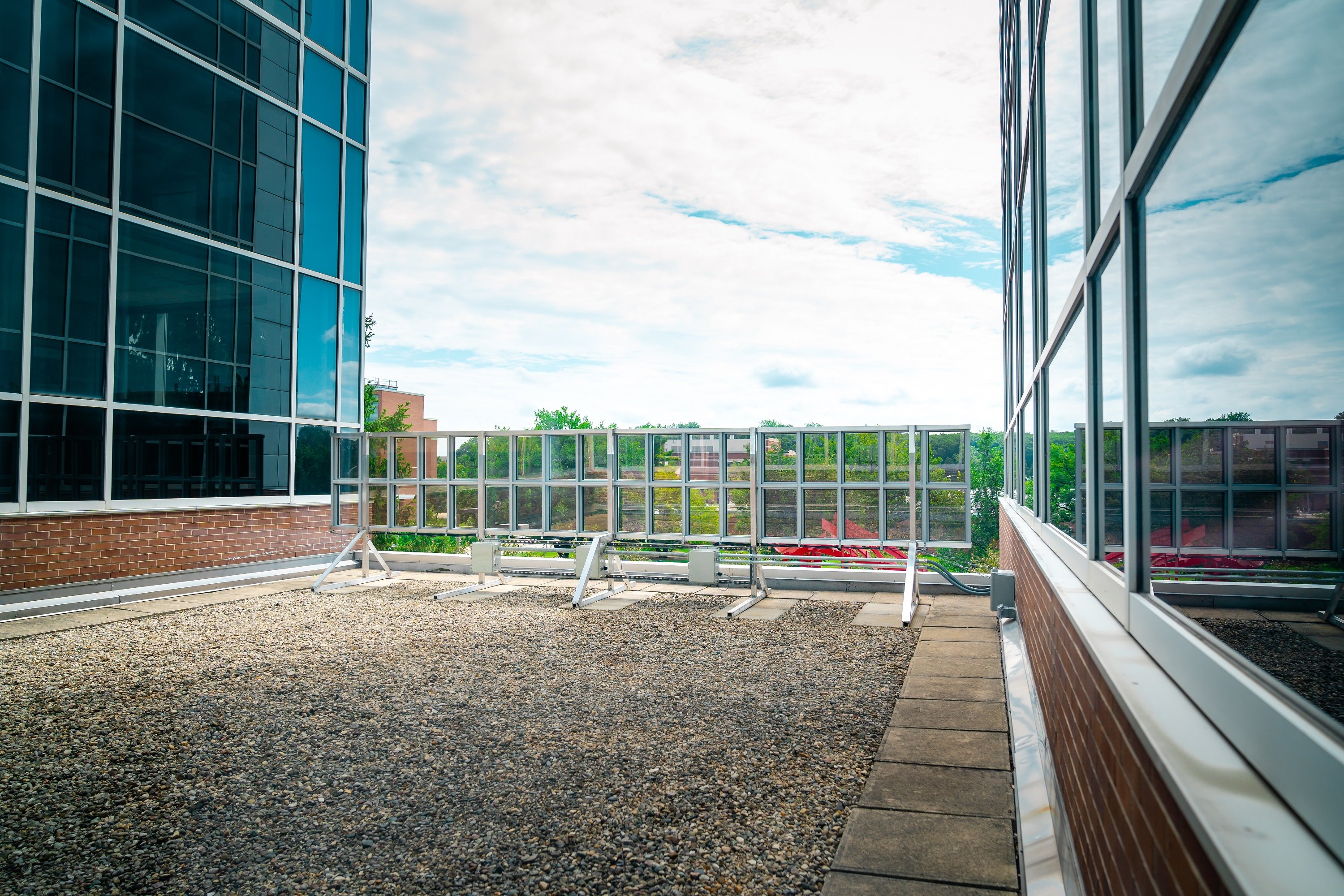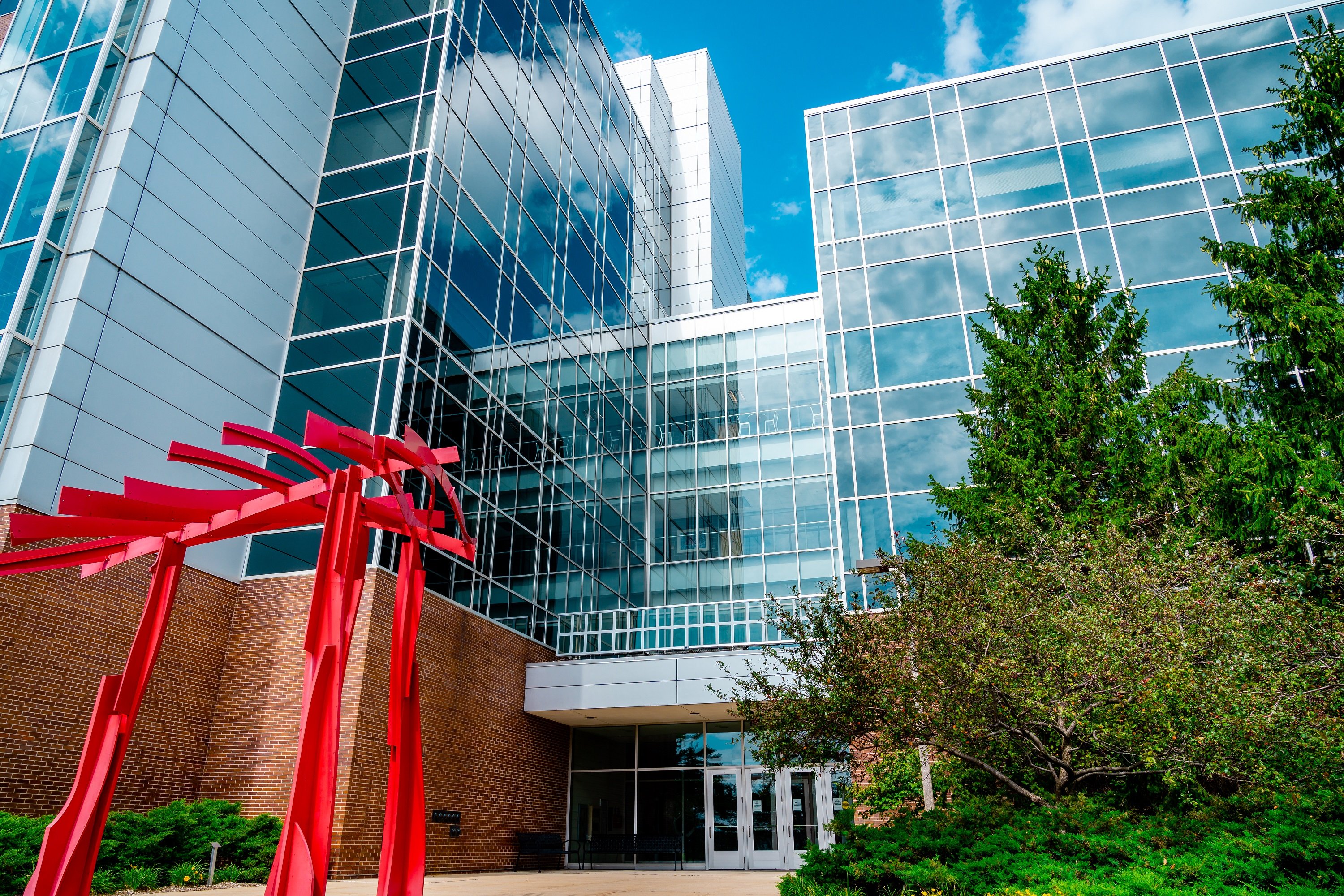The Biomedical and Physical Sciences Building on the campus of Michigan State University received a first-of-its-kind upgrade with the installation of transparent solar glass panels. The 100 square feet of transparent solar glass installed above the building’s entryway will generate enough electricity to power lighting in its atrium.
The panels were developed and manufactured by Ubiquitous Energy, together with Richard Lunt, the Johansen Crosby Endowed Professor of Chemical Engineering and Materials Science in the MSU College of Engineering. Lunt is a co-founder of Ubiquitous Energy, and the two groups have collaborated for many years to advance transparent solar technology.
“The realities of climate change mean we need to find more ways to use renewable energy,” Lunt said. “Transparent solar glass expands the options of solar power tremendously and changes the way we think about generating power. There is no longer a tradeoff between aesthetics and renewable energy. You could turn nearly every surface of a building or landscape into a solar array and generate power right where you use it without even knowing that it’s there.”
The installation marks the first deployment of this technology at any building in the world outside of Ubiquitous Energy and its commercial partners. It is also a first for any university.
“We are thrilled to see the results of our efforts come to life with this world’s first installation at MSU,” said Miles Barr, Ubiquitous Energy CTO and co-founder with Lunt. “We anticipate this installation will be an important landmark as we work to create wide-spread use of transparent solar technology.”
Similar to rooftop solar panels, the solar-harvesting system converts sunlight into electricity. However, the transparent solar panels are unique in that they let visible light pass through while picking up just the invisible wavelengths of sunlight in the ultraviolet and the near-infrared to convert into electricity. Once installed, the panels are visibly indistinguishable from traditional windows.
“Spartans being leaders and world-changers isn’t just about our students, faculty and staff, it is also about how we manage our campuses,” said Dan Bollman, MSU vice president for Strategic Infrastructure Planning and Facilities. “We are always looking for energy practices that minimize environmental strain. Being able to pioneer installation of a transformative renewable energy technology puts us on the leading edge of making a global impact.”
Other university renewable energy projects include the 2017 construction of the largest solar carport array in North America, covering 5,000 parking spaces, as well as plans to add a 20MW solar array on 110 acres south of MSU’s main campus to generate enough electricity to power 6,000 homes. Additionally, the university dramatically reduced its greenhouse gas emissions in 2015 by transitioning the on-campus power plant to natural gas, resulting in a climate impact equivalent to planting a half million trees.





